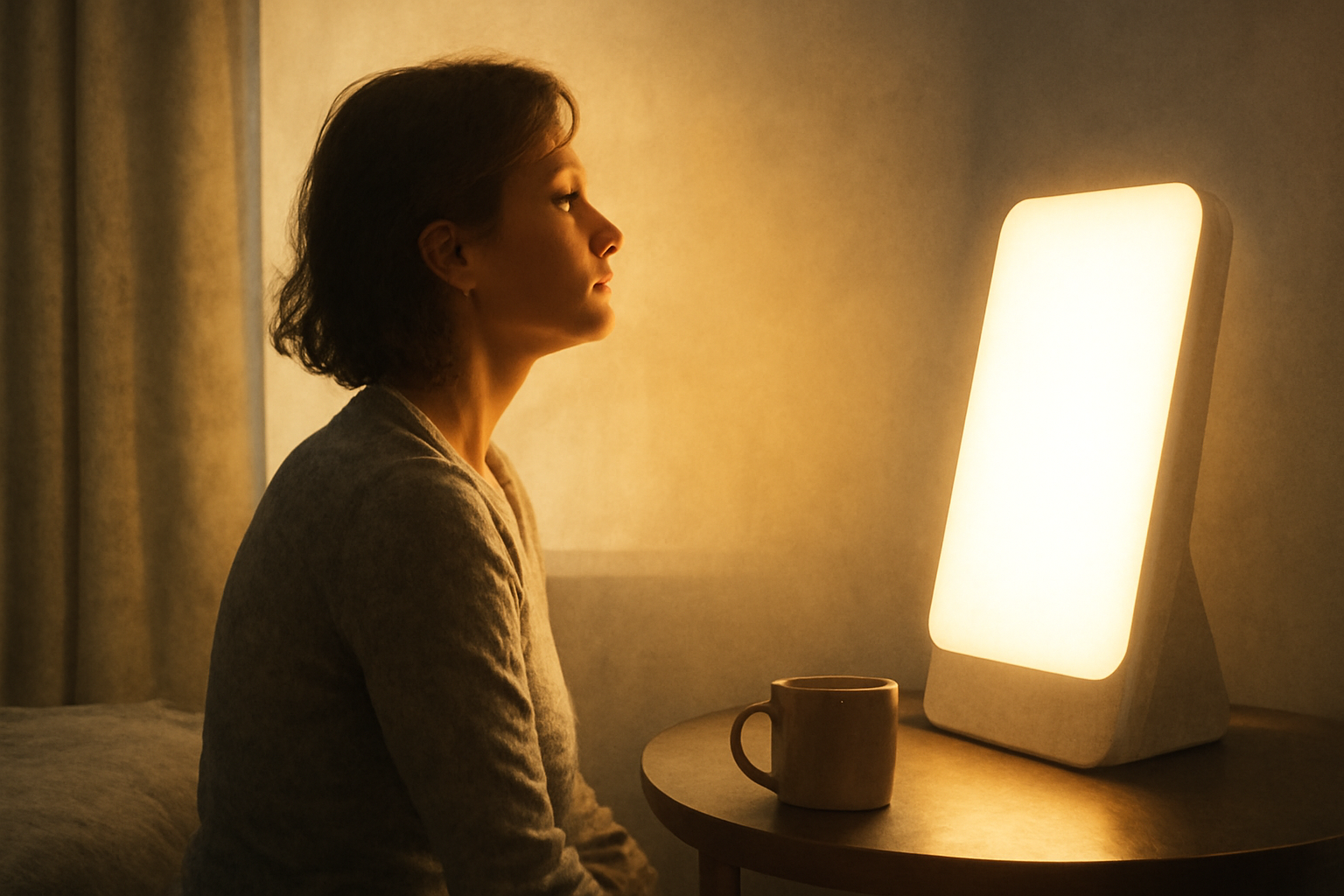Light therapy, often referred to as SAD light therapy, uses bright light to influence the body’s biological clock and mood-regulating systems. When practiced consistently, it can help regulate sleep-wake cycles, enhance alertness in the morning, and reduce depressive symptoms related to seasonal changes or circadian disruptions. The therapeutic value lies in delivering a controlled amount of light at the right time of day, which can recalibrate melatonin production, bolster daytime energy, and support mood regulation without relying solely on medications or psychotherapy. This article provides an evidence-informed overview of how sad light therapy works, practical methods, and how to integrate it safely into a broader treatment plan.
Theoretical background and principles

The brain’s master clock resides in the suprachiasmatic nucleus of the hypothalamus. Light exposure, detected by the retina, signals this clock to adjust circadian timing. Bright light in the morning can advance circadian phase, helping you feel more alert during the day and sleepy at night. The intensity of light is measured in lux; for most SAD-like indications, therapeutic devices emit 2,500 to 10,000 lux at a practical distance. A key principle is timing: morning sessions tend to align with natural melatonin suppression and daytime energy, while late-day light can disrupt sleep for some individuals. For a concise overview of how light therapy works, you can explore resources like the Sleep Foundation’s guide on light therapy Light therapy basics.
Specific methods and applications
Equipment options range from light boxes (a flat panel of bright white light) to light visors and dawn simulators. Practical implementation tips:
- Choose a device with a brightness of 2,500–10,000 lux at a comfortable distance (often 16–24 inches or about 40–60 cm).
- Use the device in the morning, shortly after waking, for typically 20–30 minutes, though some people start with 10–15 minutes and gradually increase.
- Keep eyes open and directed toward the device without staring directly into the light. Do not look straight at the bulb.
- Consistency matters: daily use during weeks of darker days yields the best results. If symptoms are persistent, duration can be extended under guidance.
- Start with medical approval if you have certain eye conditions, bipolar disorder, or photosensitivity from medications.
For more detailed, clinically oriented discussions, see resources such as Mayo Clinic’s overview of light therapy for SAD Light therapy for seasonal depression.
Conditions or situations where it’s helpful
Light therapy is most widely studied for Seasonal Affective Disorder (SAD), where depressive symptoms emerge or worsen during darker months. It also shows benefits for nonseasonal depression when sleep and energy are affected, jet lag, and shift-work sleep disorder, where misaligned light-dark cycles contribute to fatigue and mood changes. People with delayed sleep phase syndrome or irregular work hours may notice improved alertness and daytime functioning with morning light exposure. It is often used as an adjunct to traditional treatments, rather than a stand-alone cure. For an overview of practical considerations in daily life, NHS guidance on light therapy for seasonal affective disorder can be helpful NHS: light therapy for SAD.
How to learn and practice the technique
Learning to use light therapy safely begins with information and gradual exposure. Start with professional guidance if you have eye disease, bipolar disorder, or take medications that increase photosensitivity. Practical steps to begin:
- Consult a clinician to review medical history, eye health, medications, and mood symptoms before starting.
- Choose a device labeled for therapeutic use with appropriate brightness and a stable stand or mounting option.
- Set up a routine: sit at the recommended distance, usually within the device’s specified range, and perform a daily session in the same morning hour.
- Monitor response and side effects. If you experience headaches, eye strain, or insomnia after use, adjust duration or timing and consult a professional.
Some people find it helpful to pair light therapy with structured routines, such as a consistent wake time and a brief morning walk after the session. If you’d like a practical primer from a reputable health resource, consider the NHS guidance on how light therapy works for SAD Light therapy basics.
Professional guidance versus self-help applications
There are clear roles for both clinician-guided and self-guided use. Self-help light therapy can be appropriate for mild to moderate symptoms, with careful attention to device safety, user instructions, and mood-monitoring. However, professional guidance is important when:
- There is a history of bipolar disorder or a risk of mania;
- You have significant eye conditions (such as cataracts or retina disease) or photosensitive skin disorders;
- You are taking medications that heighten light sensitivity or interact with circadian biology;
- The depressive symptoms are severe or not improving with home use.
A clinician can help tailor intensity, duration, and timing, coordinate with psychotherapy or pharmacotherapy, and adjust treatment as needs change. For learners seeking structured information, reputable sources discuss light therapy in clinical contexts and can guide decision-making Sleep Foundation: light therapy guide.
Integration with other treatments
Light therapy is most effective when integrated into a broader, multimodal plan. Consider coordinating with psychotherapy (for example, cognitive-behavioral approaches that address sleep and mood), pharmacotherapy if prescribed, and sleep hygiene practices. Regular physical activity, exposure to natural light when possible, and consistent daily routines can enhance benefits. Vitamin D supplementation may be discussed with a clinician if a deficiency is suspected, though evidence for mood benefits varies. When combining therapies, monitor for interactions and mood changes, and adjust timing to avoid sleep disruption. For an evidence-informed overview that connects light therapy with broader mood interventions, you may refer to general guidance on combining therapies Mayo Clinic: light therapy and depression.

